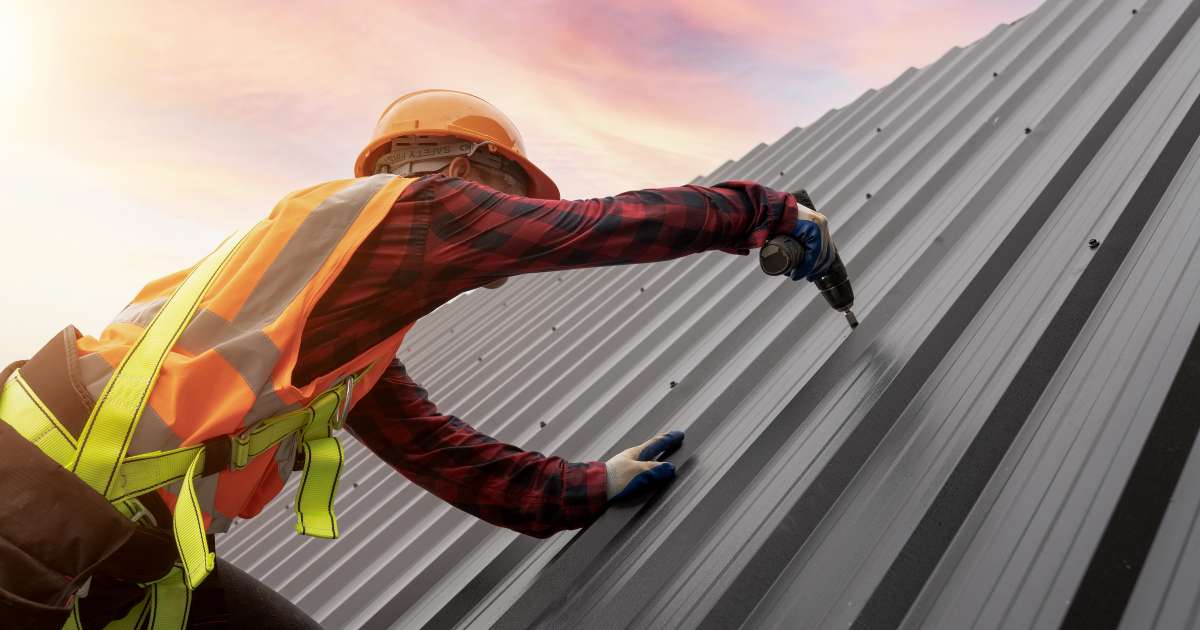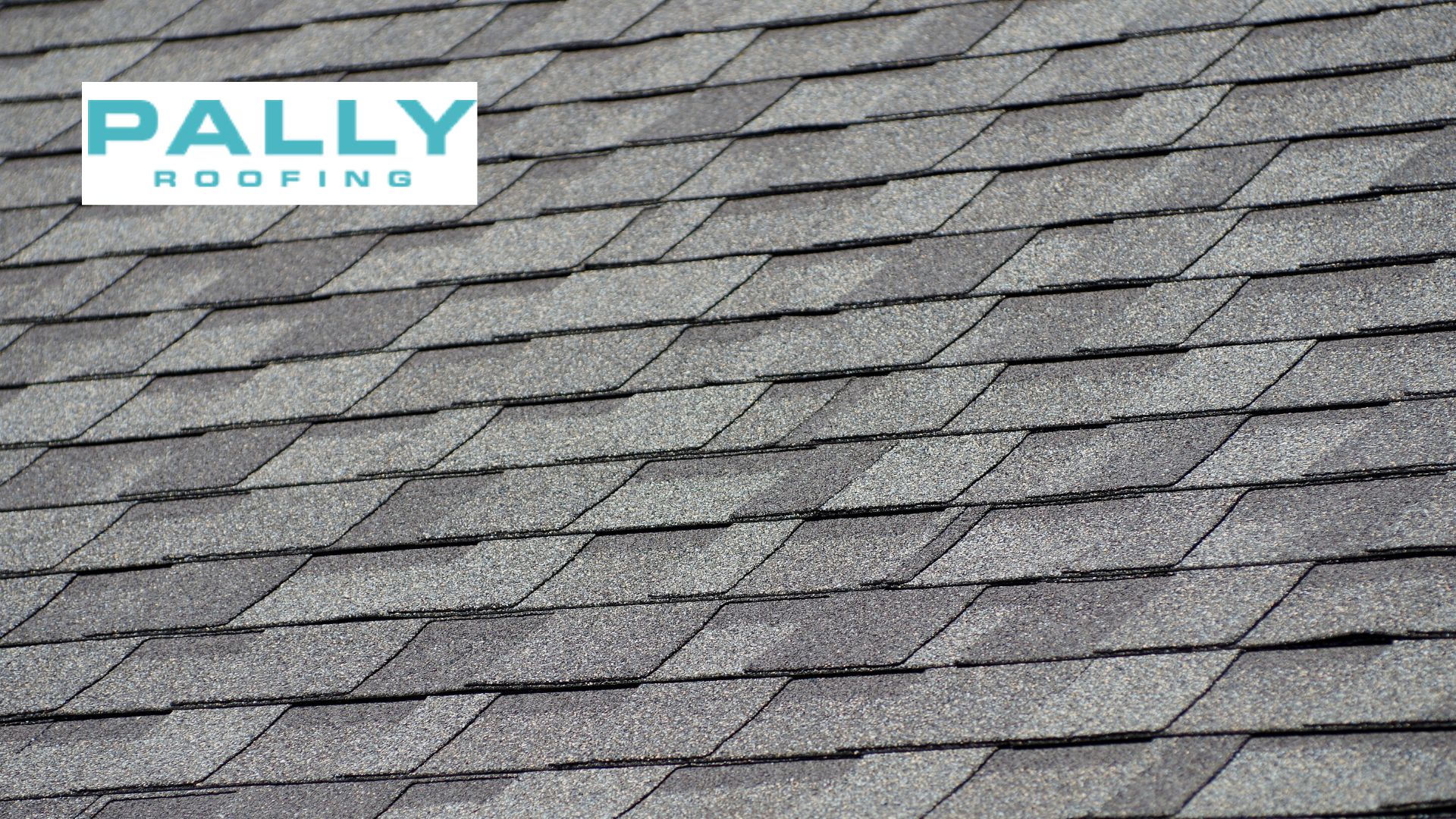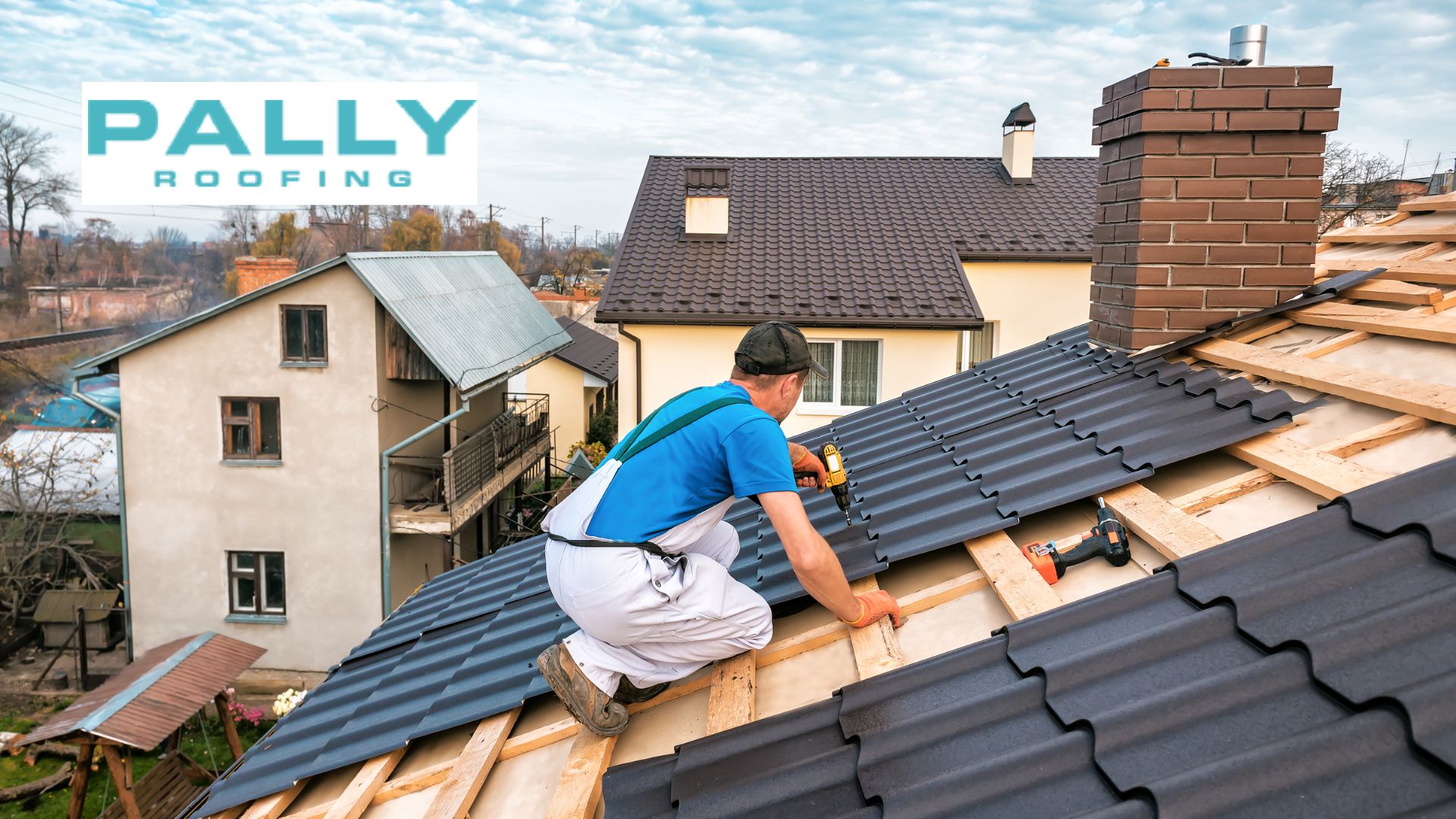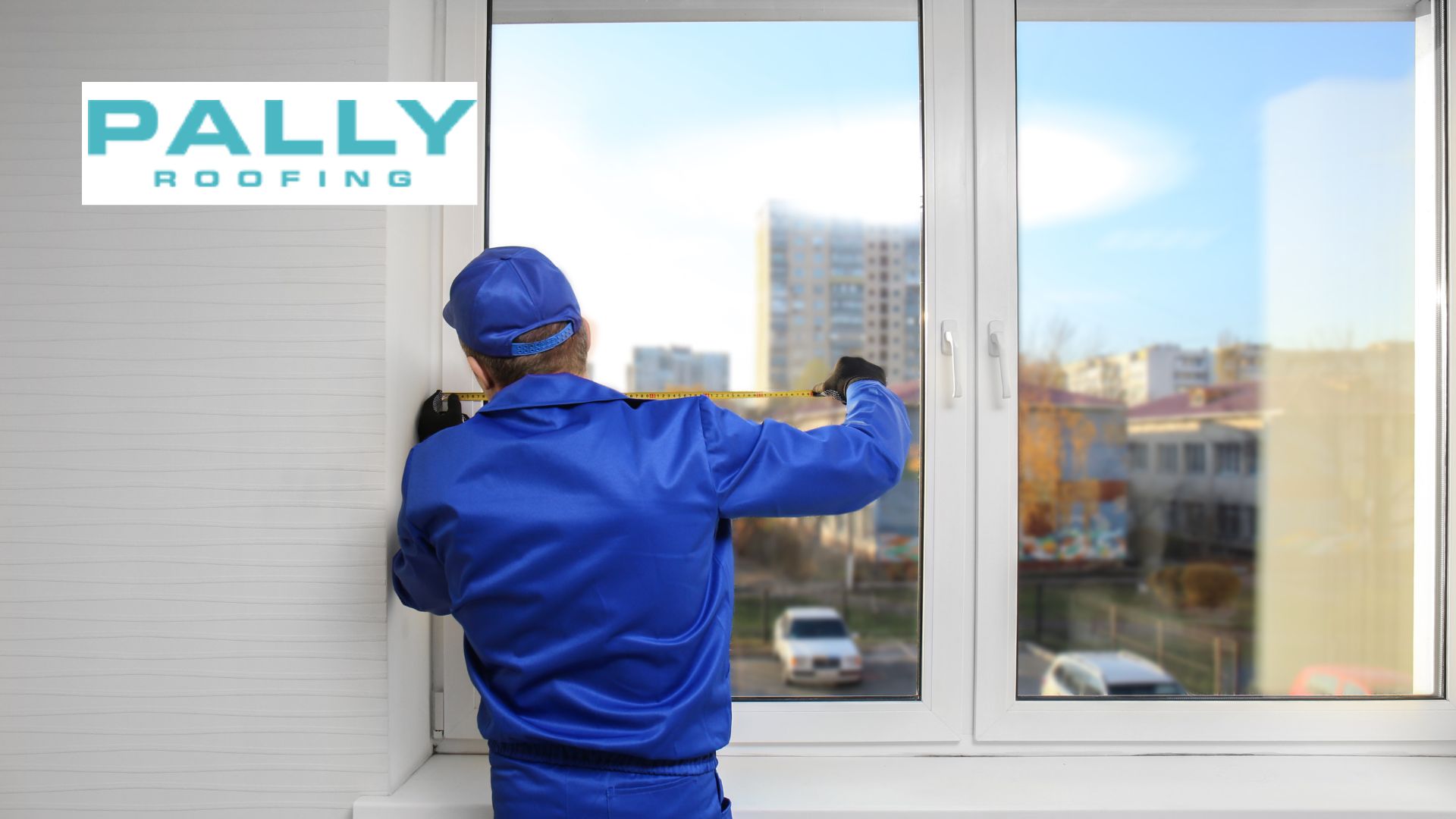Last updated on August 28th, 2024 at 09:35 am
Roofing plays a crucial role in commercial buildings’ structural integrity and longevity. Beyond providing shelter, a well-designed and properly maintained roof enhances energy efficiency, supports building aesthetics, and protects valuable assets.
Table of Contents
For businesses, the choice of roofing materials and installation services can significantly impact operational costs and the facility’s overall sustainability.
At Pally Roofing, we’re more than just roofers; we’re trusted advisors for your business. With a proven track record and a focus on quality, we keep your roof reliable and your bottom line healthy. We offer comprehensive services, ensuring your roof meets your specific needs.
What Are The 6 Key Components of the Perfect Commercial Roofing System
- Roof Deck
- Insulation
- Roofing Membrane (TPO, PVC, EPDM)
- Roof Coatings
- Flashing and Sealants
- Drainage Systems
- Skylights and Ventilation
Structural Components
Roof Deck: The roof deck forms the foundation of a commercial roofing system, providing structural support and a base for the roofing materials. Common materials used for roof decks include:
- Wood: Traditional and cost-effective, suitable for various roof types, but requires careful maintenance to prevent rot and decay.
- Metal: Offers durability and fire resistance, often used in industrial and modern commercial buildings.
- Concrete: Provides excellent durability and fire resistance, suitable for heavy-duty applications but requires proper waterproofing.
Choosing the suitable roof deck material depends on building design, climate, and budget considerations.
Insulation: Insulation is essential in commercial roofing for thermal efficiency, moisture control, and noise reduction. Common types of insulation used include:
- Spray Foam provides superior insulation and air-sealing properties, making it ideal for irregular roof shapes and high R-value requirements.
- Fiberglass is cost-effective and widely used, offering good thermal performance and moisture resistance.
- Mineral Wool: Fire-resistant and moisture-resistant, suitable for high-temperature applications and noise reduction.
Proper insulation reduces energy costs, improves occupant comfort, and extends the lifespan of the roofing system.
Roofing Membrane: Roofing membranes act as the waterproofing layer in commercial roofs, protecting the building from water infiltration and weather damage. Common types of roofing membranes include:
- TPO (Thermoplastic Polyolefin): Offers excellent UV resistance, flexibility, and heat-welded seams for superior waterproofing.
- PVC (Polyvinyl Chloride): Known for durability, chemical resistance, and ease of maintenance.
- EPDM (Ethylene Propylene Diene Terpolymer) provides superior elasticity and weather resistance, making it suitable for varying climate conditions.
Each membrane type has distinct advantages, and the choice depends on climate, building design, and budget.
These structural components create a resilient and efficient commercial roofing system, ensuring long-term protection and performance for the building and its occupants.
Protective Components
Roof Coatings: Roof coatings are applied over the roofing membrane to enhance durability, provide UV protection, and improve waterproofing capabilities. Common types of roof coatings include:
- Acrylic Coatings: Reflective and durable, offering UV protection and energy efficiency by reducing heat transfer.
- Silicone Coatings: are highly durable and flexible, resistant to UV rays and ponding water, and suitable for varying climates.
- Polyurethane Coatings: Provides strong impact resistance and waterproofing properties, ideal for high-traffic areas and extreme weather conditions.
Roof coatings extend the lifespan of the roofing membrane, reduce maintenance costs, and improve energy efficiency by reflecting sunlight.
Flashing and Sealants: Flashing and sealants play a crucial role in preventing leaks and maintaining the integrity of commercial roofing systems. Key points include:
- Flashing: Installed around roof penetrations (e.g., vents, chimneys) and edges, flashing redirects water away from critical areas and prevents water infiltration.
- Sealants: Applied to seams, joints, and gaps in the roofing system to provide an additional waterproofing layer and prevent moisture penetration.
Proper installation and maintenance of flashing and sealants are essential for ensuring a watertight seal and protecting the building from water damage and structural deterioration.
These protective components work in tandem with structural elements to enhance the performance and longevity of commercial roofing systems, safeguarding the building and its contents against environmental elements.
Functional Components
Drainage Systems: Proper drainage is critical in commercial roofing to prevent water accumulation, which can lead to structural damage and leaks. Key aspects include:
- Importance: Effective drainage ensures water flows away from the roof efficiently, preventing ponding that can weaken the roofing materials over time.
- Types of Systems:
- Internal Drains: Located within the roof structure, these drains channel water through pipes directly to the building’s drainage system.
- Scuppers: Openings or outlets along the roof’s edge that allow water to drain off the roof surface.
- Gutters and Downspouts: Collect water from the roof edges and direct it away from the foundation.
Choosing the right drainage system depends on factors such as roof design, climate, and building usage. This ensures optimal performance and longevity of the roofing system.
Skylights and Ventilation: Skylights and ventilation systems contribute to the functionality and energy efficiency of commercial roofing. Key considerations include:
- Skylights: Introduce natural light into interior spaces, reducing the need for artificial lighting and enhancing occupant comfort and productivity.
- Ventilation Systems: Improve indoor air quality by expelling stale air and regulating temperature, reducing HVAC energy consumption.
Properly installing and placing skylights and ventilation systems maximize energy efficiency, comfort, and environmental sustainability within commercial buildings.
These functional components enhance the performance of commercial roofing systems and contribute to the overall comfort, efficiency, and longevity of the building environment.

Maintenance and Sustainability
Importance of Regular Maintenance for Longevity: Regular maintenance is essential for maximizing the lifespan and performance of commercial roofing systems. Key reasons include:
- Preventative Care: Identifying and addressing minor issues early prevents them from escalating into costly repairs or premature roof replacement.
- Extended Lifespan: Routine inspections, cleaning, and repairs help maintain the integrity of roofing materials and components, extending the roof’s lifespan.
- Cost Savings: Proactive maintenance reduces long-term costs associated with major repairs and replacement, optimizing budget allocation.
By implementing a scheduled maintenance program, businesses can protect their investment in roofing infrastructure and ensure uninterrupted operations.
Sustainable Roofing Practices:
Green Roofing Options and Benefits: Green roofing practices contribute to environmental sustainability and offer numerous benefits for commercial buildings:
- Vegetative Roofs: Rooftop Plantings improve air quality, reduce the urban heat island effect, and provide natural insulation, reducing energy consumption.
- Solar Roofing: Integrating solar panels into the roofing system generates renewable energy, reduces electricity costs, and qualifies for tax incentives and rebates.
- Reflective Roofing: Cool roofing materials and coatings reflect sunlight, reducing heat absorption and cooling costs, particularly in warm climates.
Embracing sustainable roofing practices enhances the building’s environmental footprint and aligns with corporate social responsibility goals and regulatory requirements.
Businesses can optimize operational efficiency, reduce environmental impact, and promote long-term economic viability by prioritizing maintenance and adopting sustainable roofing practices.
Conclusion
The ideal commercial roof is a fortress, combining strength with weatherproofing and intelligent features. A solid base and insulation shield the building, while advanced coatings and drainage keep it dry. Skylights and ventilation add the finishing touches for a functional and comfortable space.
Choosing the right components and a trusted provider like Pally Roofing is paramount. With expertise in metal and asphalt roofing, gutter installations, and repairs, Pally Roofing ensures meticulous craftsmanship and customer satisfaction. Our commitment extends beyond installation to proactive maintenance, ensuring your roof remains secure and reliable for years.
Author
-

With more than 16 years of hands-on experience, Phillip Schmucker is the knowledgeable owner of Pally Roofing. His dedication to superior roofing services has earned him a reputable place in the industry. Phillip also shares his extensive expertise through writing, providing readers with practical tips and professional advice on various roofing topics. Follow him on LinkedIn.
View all posts









